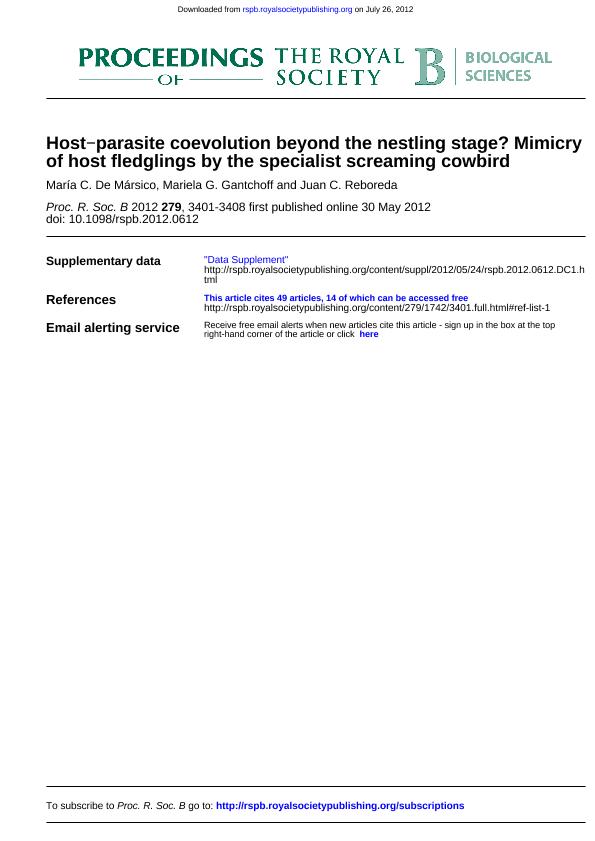Artículo
Host-parasite coevolution beyond the nestling stage?: Mimicry of host fledglings by the specialist screaming cowbird
Fecha de publicación:
05/2012
Editorial:
The Royal Society
Revista:
Proceedings of the Royal Society of London. Series B: Biological Sciences
ISSN:
0962-8452
Idioma:
Inglés
Tipo de recurso:
Artículo publicado
Clasificación temática:
Resumen
textbook examples of host-parasite coevolution. By contrast, reciprocal adaptations and counteradaptations beyond the egg stage in brood parasites and their hosts have received less attention. The screaming cowbird (Molothrus rufoaxillaris) is a specialist obligate brood parasite whose fledglings look identical to those of its primary host, the baywing (Agelaioides badius). Such a resemblance has been proposed as an adaptation in response to host discrimination against odd-looking young, but evidence supporting this idea is scarce. Here, we examined this hypothesis by comparing the survival rates of young screaming cowbirds and non-mimetic shiny cowbirds (Molothrus bonariensis) cross-fostered to baywing nests and quantifying the similarity in plumage colour and begging calls between host and cowbird fledglings. Shiny cowbirds suffered higher post-fledging mortality rates (83%) than screaming cowbirds (0%) owing to host rejection. Visual modelling revealed that screaming cowbirds, but not shiny cowbirds, were indistinguishable from host young in plumage colour. Similarly, screaming cowbirds matched baywings' begging calls more closely than shiny cowbirds. Our results strongly support the occurrence of host fledgling mimicry in screaming cowbirds and suggest a role of visual and vocal cues in fledgling discrimination by baywings.
Palabras clave:
Brood Parasitism
,
Chick Rejection
,
Coevolution
,
Cowbird
,
Mimicry
,
Visual Modelling
Archivos asociados
Licencia
Identificadores
Colecciones
Articulos(OCA CIUDAD UNIVERSITARIA)
Articulos de OFICINA DE COORDINACION ADMINISTRATIVA CIUDAD UNIVERSITARIA
Articulos de OFICINA DE COORDINACION ADMINISTRATIVA CIUDAD UNIVERSITARIA
Citación
de Marsico, Maria Cecilia; Gantchoff, Mariela G.; Reboreda, Juan Carlos; Host-parasite coevolution beyond the nestling stage?: Mimicry of host fledglings by the specialist screaming cowbird; The Royal Society; Proceedings of the Royal Society of London. Series B: Biological Sciences; 279; 1742; 5-2012; 3401-3408
Compartir
Altmétricas




